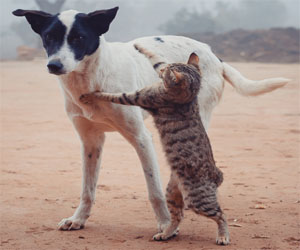


A Closer Look At The Myths And Realities

Hypnosis has long held a captivating and often enigmatic presence in popular culture. Frequently portrayed in movies, television shows, and literature, it's often used as a plot device to create mystery, intrigue, and entertainment. But how does the portrayal of hypnosis in pop culture compare to the realities of this psychological phenomenon? In this article, we explore the ways hypnosis has been depicted and the extent to which it aligns with the actual science of hypnotherapy.
Myths And Misconceptions:
Mind Control: One of the most common myths perpetuated in pop culture is the idea of hypnosis as a tool for mind control. Characters are often depicted as helplessly falling under the spell of a hypnotist, who can make them do anything against their will. In reality, hypnosis does not grant this level of control over an individual. Hypnotized individuals remain aware and can choose whether or not to follow suggestions. Ethical hypnotists adhere to strict guidelines to ensure the well-being and autonomy of their clients.
Zombie-Like Trance: Pop culture often portrays individuals in a hypnotic trance as being unresponsive and zombie-like, with vacant stares and robotic movements. In reality, individuals under hypnosis typically experience deep relaxation and heightened focus, but they remain aware of their surroundings and maintain their personalities.
Instant Solutions: Pop culture sometimes presents hypnosis as a quick and magical solution to complex problems. For example, characters may overcome deep-seated traumas or fears in a matter of minutes. In real-life therapeutic settings, hypnotherapy is a process that often requires multiple sessions to achieve meaningful and lasting results.
Realities Of Hypnosis:
Therapeutic Tool: While pop culture often exaggerates the mystical aspects of hypnosis, it's a valuable therapeutic tool used by trained professionals to address a wide range of issues. Hypnotherapy has been proven effective in smoking cessation, weight loss, stress reduction, phobia treatment, and more.
Subconscious Exploration: Hypnosis can provide a pathway to the subconscious mind, helping individuals explore and address deeply ingrained beliefs, behaviors, and emotions. It is often used to uncover the root causes of issues and work on solutions from the inside out.
Ethical Considerations: In the real world, ethical considerations are paramount in the practice of hypnotherapy. Responsible hypnotherapists prioritize the well-being and autonomy of their clients and avoid exploiting the power of suggestion for harmful or manipulative purposes.
The portrayal of hypnosis in pop culture often veers into the realm of sensationalism and myth. While it can be entertaining, it can also perpetuate misconceptions about the true nature of hypnosis. In reality, hypnosis is a legitimate and valuable therapeutic tool with applications in mental health, personal development, and wellness. By separating fact from fiction and understanding the ethical principles that guide the practice of hypnotherapy, individuals can gain a more accurate appreciation of the science behind the mystique.
Understanding And Fulfilling Their Needs
 2. Regular Veterinary Care
2. Regular Veterinary Care
Routine veterinary care is vital for monitoring and maintaining a cat's health. Regular check-ups, vaccinations, and preventive care help detect health issues early and ensure your cat receives the necessary treatments to stay happy and healthy.
3. Mental And Physical Stimulation
Cats are curious creatures that require mental and physical stimulation. Engage your cat with toys, puzzles, and interactive playtime. Activities like chasing feather wands, laser pointers, and treat-dispensing puzzles provide your cat with both mental and physical exercise, which contributes to their happiness.
4. Grooming And Hygiene
Grooming plays a significant role in a cat's happiness. Regular brushing helps prevent matting, reduces shedding, and provides an opportunity for bonding between you and your feline companion. Some breeds, particularly long-haired ones, may require more frequent grooming.
5. Safe Environment
Creating a safe and comfortable environment is essential for your cat's well-being. Ensure your living space is free of hazards, remove toxic plants and chemicals, and provide stimulating objects and areas for exploration. Cats appreciate window perches, scratching posts, and safe outdoor spaces if available.
6. Emotional Well-Being
Cats also have emotional needs. Spending quality time with your cat, offering them affection, and providing a loving and secure environment are crucial for their happiness. Building a strong bond with your cat leads to a contented and harmonious relationship.
 One of the most prominent ways in which Nostradamus' prophecies have permeated popular culture is through literature and books. Numerous authors and researchers have delved into his writings to extract or reinterpret his predictions. They have written books analyzing Nostradamus' quatrains in relation to contemporary events, suggesting connections between his words and significant occurrences. This has led to a vast collection of literature exploring Nostradamus' purported insights.
One of the most prominent ways in which Nostradamus' prophecies have permeated popular culture is through literature and books. Numerous authors and researchers have delved into his writings to extract or reinterpret his predictions. They have written books analyzing Nostradamus' quatrains in relation to contemporary events, suggesting connections between his words and significant occurrences. This has led to a vast collection of literature exploring Nostradamus' purported insights.
In film and television, Nostradamus has been a source of inspiration for countless stories. He has appeared as a character or featured in plots that involve his predictions. Some productions have taken a more historically accurate approach, while others have embraced the mystique and portrayed Nostradamus as a true prophet with incredible foresight. His prophecies have been used as plot devices to create tension and suspense in various genres, from historical dramas to science fiction.
Nostradamus' influence extends to music as well. Many songs and albums reference his prophecies, symbolism, or ideas. Some artists have drawn inspiration from the mystique of Nostradamus' work to create lyrics and concepts that explore themes of prophecy, the future, and the unknown.
A World Of Skill, Agility, And Bonding
 Obedience competitions, on the other hand, emphasize a dog's ability to follow commands and exhibit self-control. Dogs must perform a series of commands, such as sitting, staying, and heeling, with precision. These competitions not only showcase the dog's obedience but also their intelligence and the training efforts invested by their owners.
Obedience competitions, on the other hand, emphasize a dog's ability to follow commands and exhibit self-control. Dogs must perform a series of commands, such as sitting, staying, and heeling, with precision. These competitions not only showcase the dog's obedience but also their intelligence and the training efforts invested by their owners.
Herding trials are an excellent example of competitions that tap into a dog's innate instincts. Breeds such as Border Collies and Australian Shepherds excel in these trials, as they are natural herders. In these contests, dogs are tasked with herding a group of livestock through a course, demonstrating their herding skills, control, and adaptability.
Retrieving trials are designed for breeds known for their retrieving abilities, such as Labrador Retrievers and Golden Retrievers. These competitions involve tasks like retrieving a dummy or an object from water, showcasing the dog's strength, swimming ability, and willingness to retrieve objects for their owner.
Apart from honing a dog's physical and mental abilities, canine competitions offer numerous benefits. For dogs, they provide essential exercise and mental stimulation, contributing to their overall well-being. These competitions also foster socialization, as dogs interact with other canines and their owners, helping them become more well-adjusted pets.
For dog owners, participating in canine competitions is an opportunity to deepen their bond with their furry friends. The trust and teamwork required to excel in these events create a unique connection between the two, enhancing their companionship. It's a chance for owners to learn more about their dog's capabilities and build a stronger, more harmonious relationship.
Moreover, canine competitions can be an educational experience for owners, offering a platform to refine their training techniques and learn from seasoned competitors. The sense of achievement derived from successfully competing with one's dog is immensely rewarding and can boost confidence in both dog and owner.






The Art Of Dream Interpretation
 Symbols In Dreams: Dreams often manifest as a collage of symbols, each with its unique significance. Common dream symbols may include animals, objects, people, and landscapes. Interpretation involves associating these symbols with their emotional and psychological connotations.
Symbols In Dreams: Dreams often manifest as a collage of symbols, each with its unique significance. Common dream symbols may include animals, objects, people, and landscapes. Interpretation involves associating these symbols with their emotional and psychological connotations.
Emotions In Dreams: Emotions play a crucial role in dream interpretation. The feelings experienced within a dream can reveal the dreamer's emotional state, unresolved conflicts, or desires. Analyzing the emotional content of dreams can be a key to self-awareness.
Freudian Interpretation: Sigmund Freud, the father of psychoanalysis, proposed that dreams are a window into the unconscious mind. He believed that dream symbols often represent hidden desires and unresolved conflicts. Freudian dream interpretation is centered on the idea of wish fulfillment.
Jungian Interpretation: Carl Jung, another influential psychologist, introduced the concept of archetypes into dream interpretation. Jung believed that dreams reflect universal themes and symbols. Jungian dream analysis involves exploring the collective unconscious and personal symbols.
Cultural And Personal Context: Dream interpretation is deeply influenced by cultural and personal context. What a symbol means to one person may vary significantly from its interpretation in another culture or for a different individual. Personal experiences, memories, and beliefs shape dream analysis.
A Sustainable Solution For A Greener Future
 Biogas And Anaerobic Digestion
Biogas And Anaerobic Digestion
Another waste-to-heat method involves the conversion of organic waste into biogas through anaerobic digestion. In this process, microorganisms break down organic matter in the absence of oxygen, producing biogas, which is primarily composed of methane. This biogas can be used as a renewable fuel for heating, whether in residential, commercial, or industrial applications.
Municipal Solid Waste-To-Energy
Waste-to-energy facilities that convert municipal solid waste into electricity often capture and utilize the waste heat generated during the process. This waste heat can be channeled into district heating systems, thereby providing a sustainable and efficient way to meet the heating needs of communities.
Environmental And Economic Benefits
Renewable heat from waste offers numerous environmental and economic advantages. Firstly, it reduces the demand for non-renewable heating sources, such as natural gas and oil, which helps lower carbon emissions and combat climate change. Additionally, it contributes to waste diversion, reducing the pressure on landfills and minimizing their environmental impact.
From an economic perspective, utilizing waste materials for heat generation can create jobs in waste collection, transportation, and processing, as well as in the design and maintenance of heating systems.